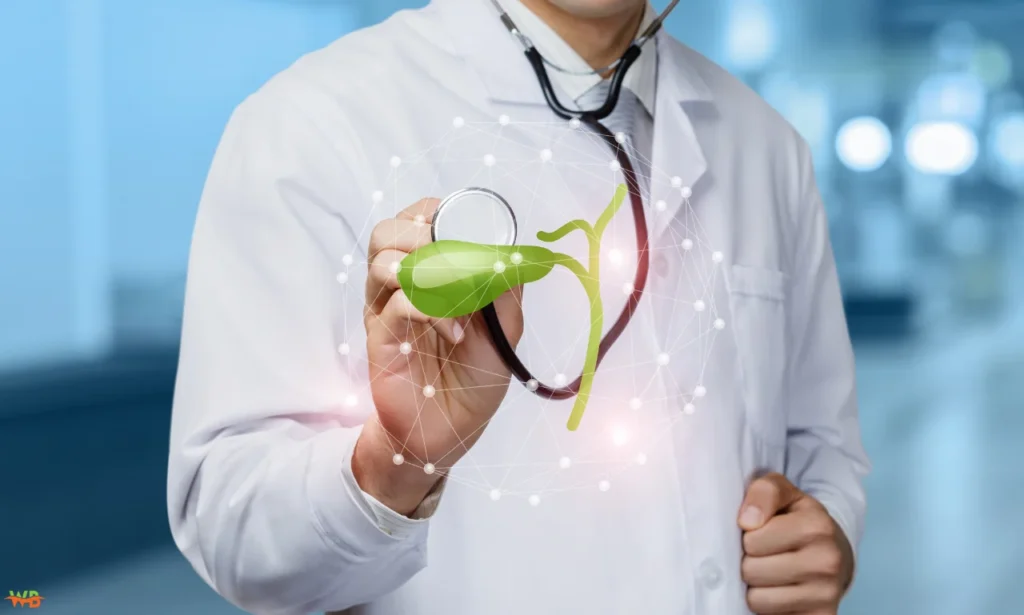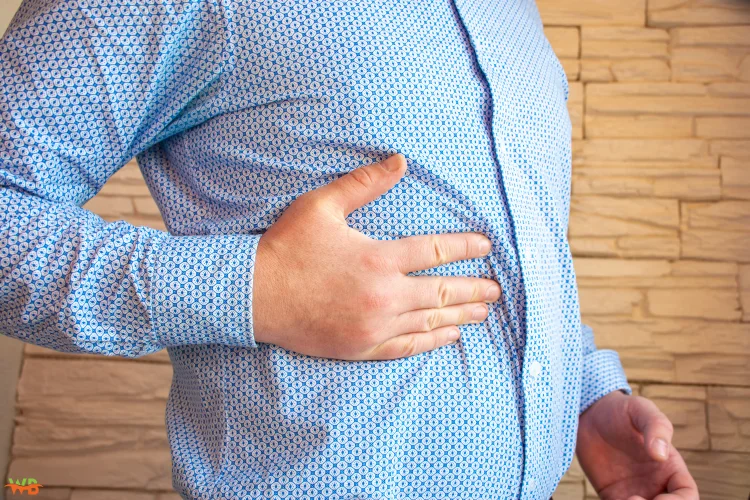Gallbladder attacks are sudden and painful episodes often triggered by gallstones. Understanding the nature of these attacks, their symptoms, and available treatments is crucial for those suffering from gallbladder issues. This article delves into the pain associated with gallbladder attacks, exploring their causes, symptoms, and potential remedies.
What is a Gallbladder Attack?
A gallbladder attack occurs when a gallstone blocks the bile ducts, causing severe pain and discomfort. The gallbladder, a small organ beneath the liver, stores bile, a digestive fluid that helps break down fats. When bile flow is obstructed, it leads to intense pain and other symptoms.
Pain of Gallbladder Attack
1- Characteristics of Gallbladder Attack Pain
Gallbladder attack pain typically starts suddenly and can be severe. The pain typically begins in the upper right side of the abdomen and may extend to the back or right shoulder. It can range from lasting just a few minutes to extending over several hours.
2- Intensity and Duration of Pain
The force of the aggravation can shift, going from gentle to serious. It typically reaches its peak within 15 to 60 minutes and may diminish either gradually or abruptly. In some cases, the pain can be persistent, leading to prolonged discomfort.
3- Factors Influencing Pain Severity
Numerous factors influence the severity of pain during a gallbladder attack, including the size and number of gallstones, the degree of blockage, and the individual’s pain tolerance. Other existing health conditions can also intensify the pain.
Symptoms Accompanying Gallbladder Pain
1- Nausea and Vomiting
Nausea and vomiting typically accompany gallbladder pain. The digestive system’s disruption due to bile duct blockage can cause these symptoms, making the attack even more distressing.
2- Fever and Chills
A gallbladder attack can sometimes lead to an infection, resulting in fever and chills. These symptoms indicate a more severe condition requiring immediate medical attention.
3- Jaundice
If the bile duct remains blocked for an extended period, it can lead to jaundice, characterized by yellowing of the skin and eyes. This occurs because bile builds up in the bloodstream instead of being excreted.
Causes of Gallbladder Attacks
1- Gallstones
Gallstones are the primary cause of gallbladder attacks. These hardened deposits of digestive fluid can vary in size and number, blocking the bile ducts and causing pain for gallbladder attacks.
2- Dietary Factors
High-fat and high-cholesterol diets contribute significantly to the formation of gallstones. Rapid weight loss and prolonged fasting can also trigger gallstone formation.
3- Genetic Predisposition
A family history of gallstones can increase the likelihood of developing gallbladder problems. Genetic factors play a crucial role in determining an individual’s risk.
Diagnosis of Gallbladder Attacks
1- Physical Examination
A healthcare provider will perform a physical examination to check for tenderness in the abdomen, especially in the upper right quadrant.
2- Imaging Tests
Ultrasound and CT scans are commonly used to detect gallstones and assess the severity of the blockage.
3- Blood Tests
Blood tests can reveal signs of infection or inflammation, helping to confirm a diagnosis of a gallbladder attack.
Treatment Options
Medications
Pain relievers and anti-inflammatory medications can help manage the pain and reduce inflammation during a gallbladder attack.
Non-Surgical Interventions
In some cases, non-surgical treatments like oral bile acid pills can dissolve gallstones, providing relief without the need for surgery.
Surgical Solutions
1- Cholecystectomy
The primary surgical solution for gallbladder attacks, including severe pain with gallbladder attack, is cholecystectomy, which involves removing the gallbladder. This procedure can be performed using either laparoscopic techniques or traditional open surgery.
2- Endoscopic Procedures
Endoscopic techniques, such as ERCP (Endoscopic Retrograde Cholangiopancreatography), can remove gallstones from the bile ducts without removing the gallbladder.
Preventing Gallbladder Attacks
1- Dietary Modifications
A healthy diet low in fat and cholesterol can help prevent the formation of gallstones. Increasing fiber intake and maintaining a balanced diet are essential preventive measures.
2- Regular Exercise
Regular physical activity can reduce the risk of gallstones by promoting healthy digestion and weight management.
3- Maintaining a Healthy Weight
Avoiding rapid weight loss and maintaining a healthy weight through gradual, sustained efforts can prevent gallstone formation.
Living with Gallbladder Issues
1- Managing Chronic Pain
For individuals with chronic gallbladder issues, managing pain through lifestyle changes and medications is crucial. Routine medical examinations and ongoing monitoring are crucial.
2- Dietary Considerations
Adopting a gallbladder-friendly diet involves avoiding fatty foods, fried items, and processed snacks. Pick new organic products, vegetables, and lean meats.
3- When to Seek Medical Help
Recognizing the right time to seek medical help during a gallbladder attack is crucial. Persistent pain, high fever, and jaundice are red flags that require immediate care.
FAQs
1- How would you describe the pain experienced during a gallbladder attack?
- The pain is typically severe and sudden, located in the upper right abdomen, and can radiate to the back or right shoulder.
2- How long does a gallbladder attack last?
- The span might go from a couple of moments to a couple of hours. In some cases, the pain can persist for longer periods.
3- Can diet influence gallbladder attacks?
- Yes, a diet high in fat and cholesterol can increase the risk of gallstones, leading to gallbladder attacks.
4- What are the treatment options for gallbladder attacks?
- Treatment options include medications, non-surgical interventions, and surgical procedures like cholecystectomy.
5- Can gallbladder attacks be prevented?
- Yes, adopting a healthy diet, regular exercise, and maintaining a healthy weight can help prevent gallbladder attacks.
6- When is it necessary to get medical help for a gallbladder attack?
- Seek medical help if you experience severe pain, high fever, chills, or jaundice during a gallbladder attack.
Conclusion
Gallbladder attacks are painful and disruptive, but understanding their causes, symptoms, and treatments can help manage and prevent them. By making lifestyle changes and seeking appropriate medical care, individuals can lead healthier, pain-free lives.

I’m Salman Khayam, founder of Wellbeing Junction. I synthesize trusted information from research and expert guidance to create clear articles across health, wellness, and lifestyle topics.
Disclaimer: Content is for informational purposes only and is not medical advice. Consult a qualified expert regarding personal health or specialized questions.





